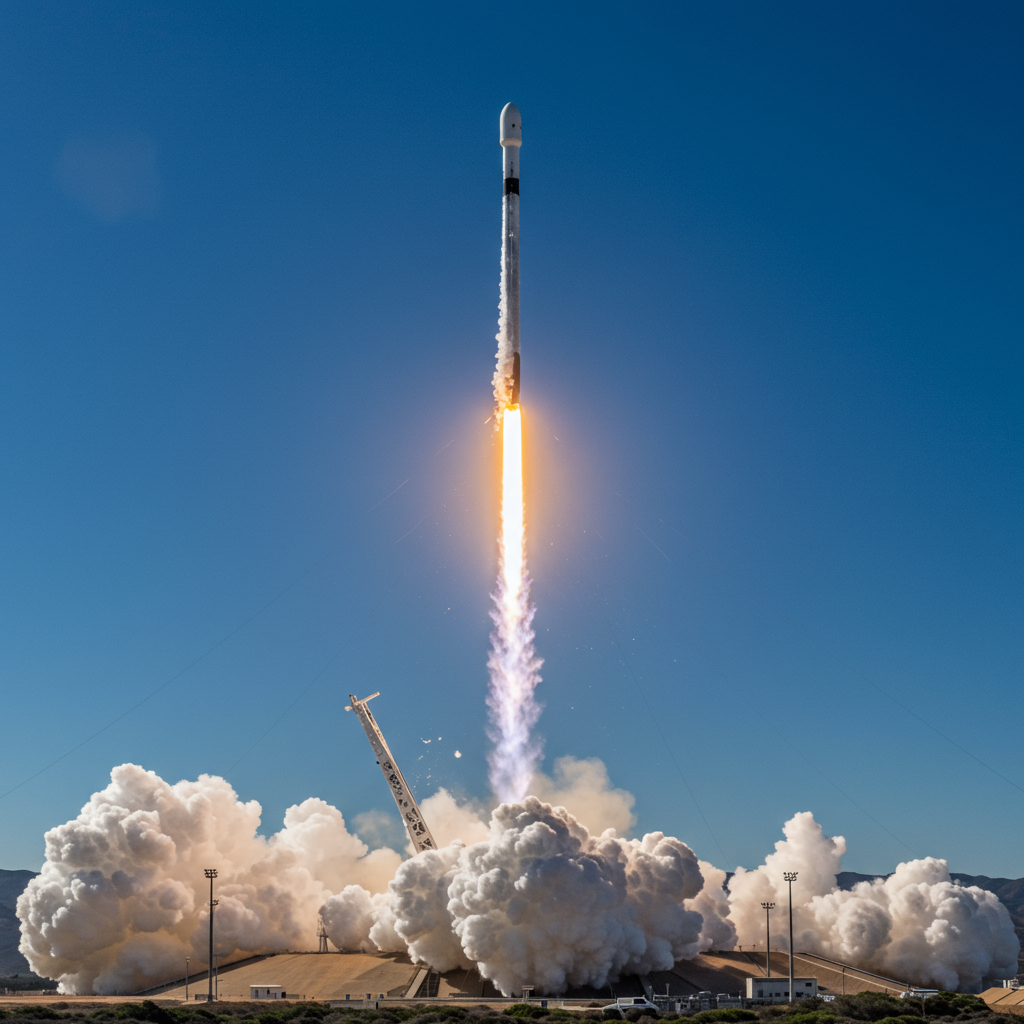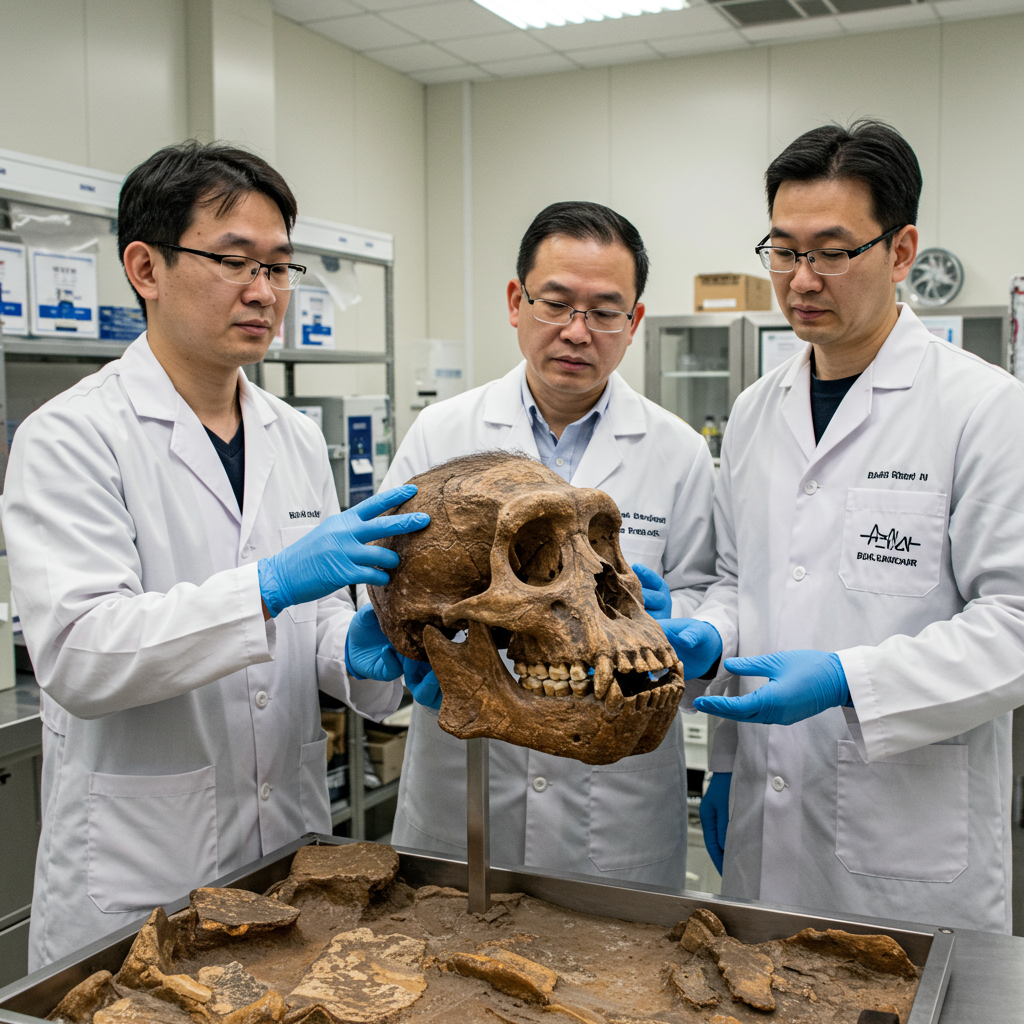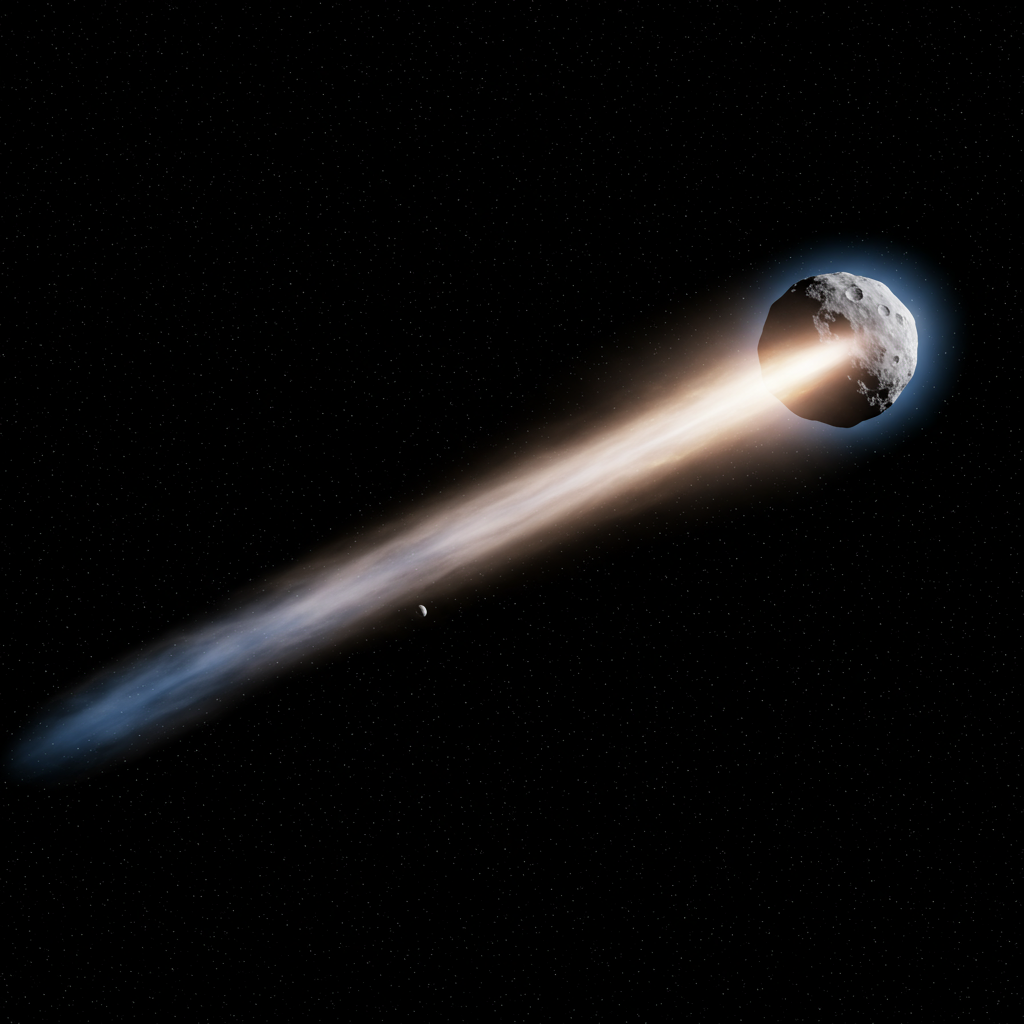SpaceX is set to launch its latest dedicated smallsat rideshare mission, Transporter-14, from Vandenberg Space Force Base in California. Originally scheduled for Sunday, June 22, 2025, poor weather at the launch site necessitated a 24-hour delay. Liftoff of the Falcon 9 rocket is now targeted for Monday, June 23, 2025, at 2:18 p.m. PDT (5:18 p.m. EDT, 2118 UTC).
This mission continues SpaceX’s program offering affordable and regular access to orbit for small satellite operators. Transporter-14 aims to deliver a collection of 70 customer payloads into a Sun-synchronous orbit (SSO), a highly sought-after destination ideal for Earth observation satellites.
A Veteran Falcon 9 Booster Takes Flight
The mission will utilize Falcon 9 first stage booster B1071. This flight marks the 26th journey to space for this particular booster, highlighting the remarkable reusability achieved by SpaceX. B1071 has a history of supporting critical missions, including several for the National Reconnaissance Office, previous SpaceX rideshare flights, and NASA’s SWOT spacecraft.
Following liftoff from Space Launch Complex 4 East (SLC-4E), the Falcon 9 will fly on a southward trajectory towards its target orbit. Approximately 8.5 minutes after leaving the pad, booster B1071 will attempt a landing on the droneship ‘Of Course I Still Love You,’ stationed downrange in the Pacific Ocean. A successful recovery would be a significant milestone, marking the 138th landing for this vessel and the 466th overall successful booster landing for SpaceX.
Exolaunch: Facilitating Access to Orbit
A major player in the smallsat ecosystem, Berlin-based Exolaunch, is a key partner on Transporter-14. The company specializes in payload aggregation and integration, helping customers manifest their spacecraft onto these rideshare missions. Exolaunch has been involved in every Transporter mission to date, as well as SpaceX’s Bandwagon missions which target mid-inclination orbits.
Transporter-14 represents Exolaunch’s largest single mission yet, as they are managing the integration and deployment of 45 of the 70 payloads onboard. These payloads come from 25 customers spanning across fifteen different countries, showcasing the global nature of the smallsat industry. Exolaunch facilitates launches for a wide range of satellites, from CubeSats as small as 16U to microsatellites weighing up to 250 kg, utilizing their flight-proven deployment mechanisms like the EXOpod, CarboNIX, EXOport, and Quadro Arrow.
Exolaunch CEO Robert Sproles highlighted the “industry enabling” nature of SpaceX’s rideshare program, calling it something their customers “depend on.” He emphasized the meticulous planning required for missions carrying such a high number of payloads, noting that everything “has to work like clockwork” and requires thinking through “every activity.” Sproles also outlined key customer deadlines, noting that while flexibility exists, eight months out (L-8 months) is a critical point for configurations and deliverables, and adding a new payload four months out (L-4 months) is considered “rare” and a “worst case” scenario.
The company recently secured a new multi-year contract with SpaceX extending through 2028. This agreement provides Exolaunch access to a variety of orbits, including SSO, mid-inclination, near-polar, and dawn-dusk, offering their customers predictable and reliable launch opportunities. This certainty helps customers achieve their time-to-revenue goals after investing significantly in building their satellites. Exolaunch is also exploring future possibilities, engaging in early talks with SpaceX about potentially supporting commercial Starship launches.
Among the notable payloads managed by Exolaunch on Transporter-14 are Gilmour Space’s ElaraSat bus carrying a hyperspectral imager for water quality studies, Hydrosat’s VanZyl-2 Earth observation satellite with a thermal infrared imager designed to fill gaps in current data, and the German Quick3 CubeSat for quantum communications testing. Additionally, Exolaunch is facilitating launches for five payloads managed through Konigsberg NanoAvionics, including a NASA experiment aiming for the first detection of neutrinos in space and a New Zealand imager equipped with a dragsail for deorbiting.
Reaching for the Top: The Cake Topper and Reentry Tests
One of the most unique positions on a Falcon 9 rideshare mission is the “Cake Topper,” situated at the very top of the payload stack. This spot offers a dedicated interface for small-to-medium spacecraft up to 2500 kg, blending the schedule predictability of the rideshare program with some capabilities typically associated with dedicated missions.
For Transporter-14, the Cake Topper payload is the Mission Possible capsule from The Exploration Company (TEC), a Germany-based firm. This marks TEC’s second development mission towards creating reusable cargo transport vehicles called Nyx Earth, with plans for future crewed and lunar variants. Developed over roughly three years at a cost of about €35 million (~$40 million), Mission Possible aims to be one of the first controlled reentry vehicles developed in Europe in decades, following ESA demonstrators in 1998 and 2015.
The 1.6-ton, 2.5-meter diameter capsule carries 25 internal payloads and is designed to test five critical mission phases: in-orbit payload activation, separation from the launch vehicle, attitude control, atmospheric reentry, and splashdown with ocean recovery. Mission Possible follows TEC’s first capsule, Mission Bikini, which launched on the inaugural Ariane 6 flight but did not complete its reentry demonstration due to an upper stage issue.
TEC has adopted a cost-conscious approach for Mission Possible, utilizing commercial off-the-shelf components for the flight computer and opting for no redundancy on critical systems like having only one parachute (borrowed from SpaceX’s Dragon program) and one onboard computer. They explicitly acknowledge this increases failure risk but enables “lower costs, faster development, and a deeper understanding” through rapid iterations. The Mission Possible capsule is scheduled to be the final payload deployed, separating nearly 2 hours and 45 minutes after liftoff before beginning its test sequence targeting a splashdown in the Pacific near Hawaii. Intriguingly, this Nyx capsule also hosts the Celestis “Perseverance” mission, carrying the remains of 100 people for a space funeral service, alongside scientific and biological payloads.
Also on this mission is Varda Space Industries’ W-4, its fourth Winnebago capsule focused on pharmaceutical manufacturing in microgravity and testing new reentry heat shield materials. The inclusion of two distinct reentry capsules on a single rideshare mission highlights the growing commercial interest in orbital manufacturing and return capabilities.
Vandenberg: A Growing Hub for Space
The Transporter-14 mission is part of SpaceX’s ambitious launch cadence for 2025, with projections aiming for potentially up to 170 Falcon 9 flights across all launch sites. Activity from Vandenberg Space Force Base is also increasing, particularly following recent FAA approval allowing up to 50 launches per year from SLC-4E.
Transporter missions, like Transporter-11 which carried 116 payloads and Transporter-12 with 131 payloads, routinely demonstrate the sheer scale and diversity of the small satellite market. Payloads on these flights include constellations for Earth observation (optical, hyperspectral, SAR, thermal IR), weather monitoring, RF sensing, and IoT connectivity, alongside technology demonstrators and academic experiments from a wide array of international providers. This robust manifest on Transporter-14 underscores the vital role SpaceX’s rideshare program plays in providing essential access to orbit for the rapidly expanding global space industry.




